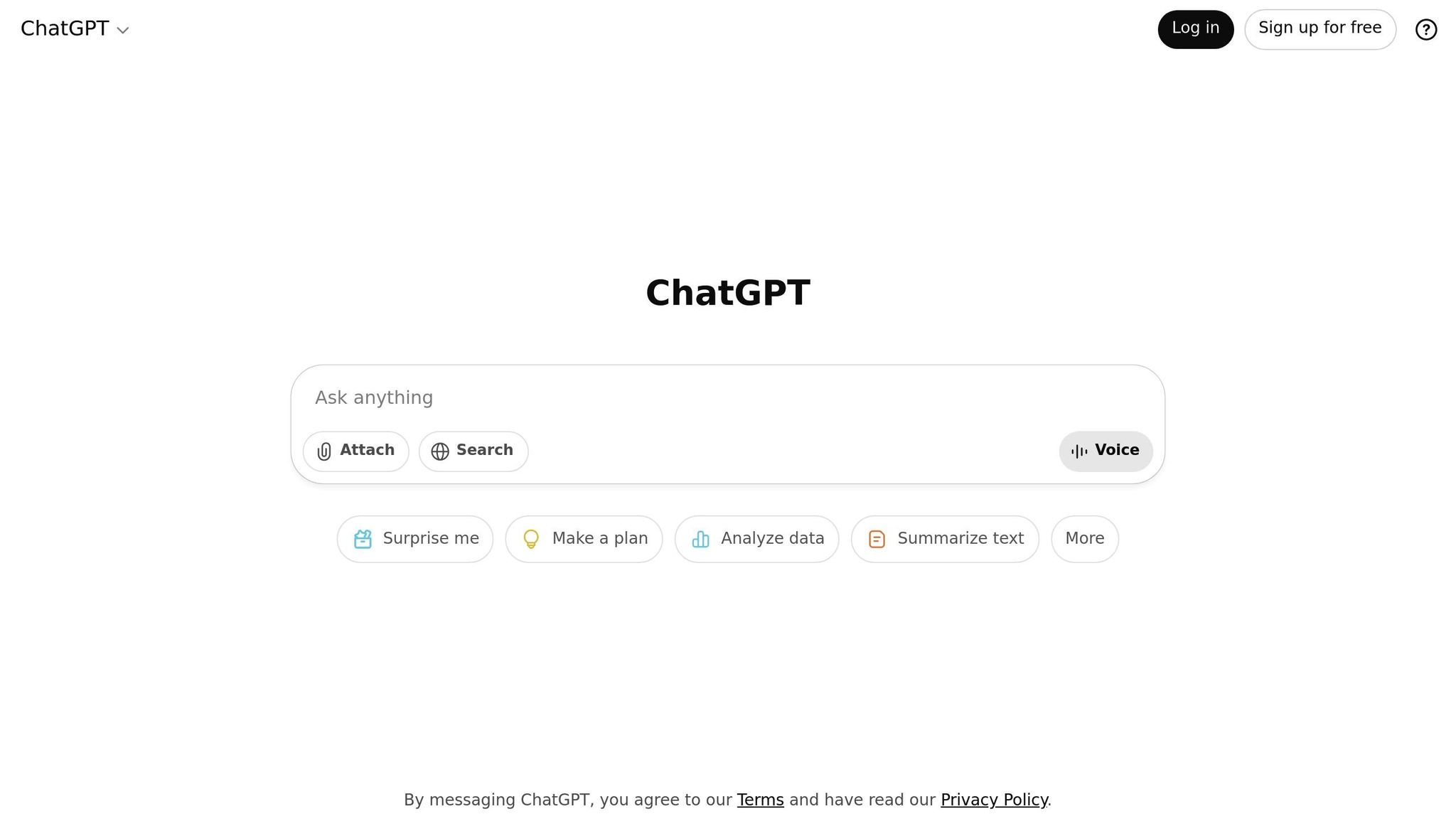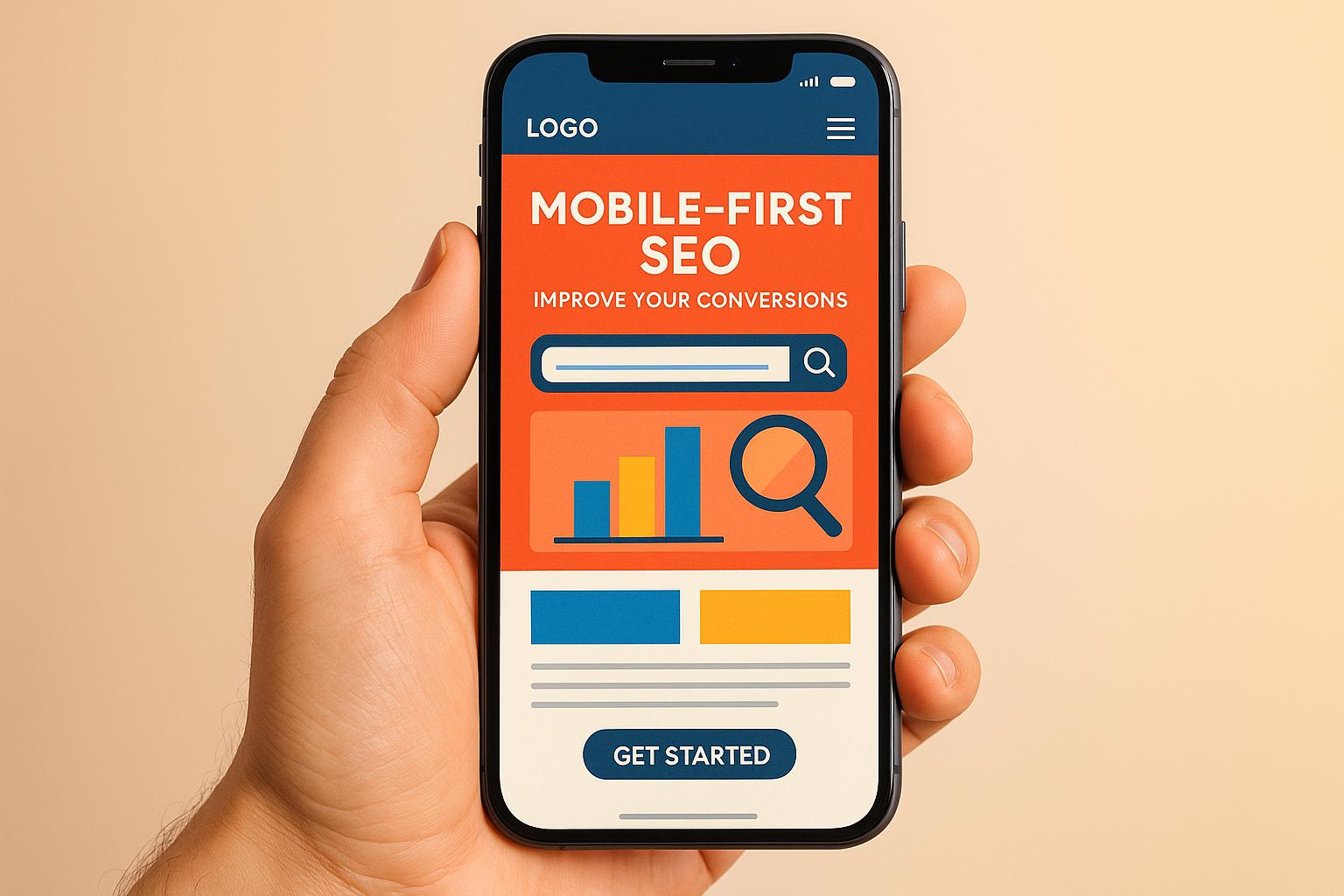

How AI Improves Backlink Quality Checks

How AI Improves Backlink Quality Checks
 03-07-2025 (Last modified: 28-07-2025)
03-07-2025 (Last modified: 28-07-2025)
AI is transforming how backlinks are evaluated, making the process faster, more accurate, and data-driven. Here’s what you need to know:
- Backlink quality matters: Search engines rely on backlinks as a signal of credibility and relevance. High-quality backlinks improve rankings and visibility.
- AI tools simplify analysis: They automate tasks like auditing backlinks, scoring link authority, and identifying harmful links.
- Real-time monitoring: AI flags issues instantly, allowing quick adjustments to maintain a healthy backlink profile.
- Predictive insights: AI forecasts trends and helps discover future link-building opportunities.
- Improved outreach: Automation personalizes outreach campaigns, increasing response rates and link acquisition success.
AI doesn’t replace human expertise but enhances it, enabling SEO professionals to make smarter, faster decisions. By combining AI’s capabilities with strategic thinking, you can improve your backlink strategy and stay competitive.
Use ChatGPT for Backlink Analysis and Visualization

Key Features of AI-Powered Backlink Analysis Tools
AI-powered backlink analysis tools have changed the game for SEO professionals, offering smarter and faster ways to evaluate the quality of backlinks. By using machine learning algorithms, these tools can analyze vast amounts of data in record time, automating tasks that would take weeks to handle manually.
Core Functions of AI Tools in Backlink Assessment
One standout feature of AI tools is their ability to perform automated link profile audits. They can scan thousands of backlinks to uncover patterns and inconsistencies that may indicate quality issues. These tools evaluate multiple factors at once, such as link authority, content relevance, and historical performance metrics.
Authority scoring is another key function. Instead of relying solely on basic domain authority metrics, AI algorithms calculate more detailed scores by examining factors like domain age, traffic trends, and the quality of other sites linking to the domain. This provides a more in-depth understanding of a link’s actual value.
AI also excels in analyzing contextual relevance. By examining the content surrounding each backlink, these tools assess whether the link comes from a site with an engaged audience and whether it aligns with search engine standards.
Competitor benchmarking is an additional strength of AI tools. For instance, a SaaS company used AI to audit its backlink profile, identifying harmful links to disavow. This proactive approach led to improved rankings.
Predictive analytics is another game-changer. AI tools can analyze historical data and trends to predict future backlink opportunities. For example, a digital marketing agency used this capability to spot emerging trends, create targeted content, and significantly boost organic traffic and backlink quality for its clients.
Moreover, AI simplifies prospecting by identifying high-quality domains and key influencers within specific industries. These advanced capabilities save time and improve accuracy, making them invaluable for SEO professionals.
Benefits of Using AI Over Manual Methods
The time savings offered by AI tools are immense. While manual backlink analysis could take days or even weeks, AI can process large datasets in just minutes. Plus, AI reduces the risk of human error by identifying subtle red flags that might be missed during manual reviews. For example, an e-commerce platform used an AI-powered content recommendation engine to analyze user behavior and automate link placements. This resulted in better internal linking, higher user engagement, and increased site retention rates.
AI also enhances outreach efforts. A B2B company integrated AI with its CRM system to personalize link-building campaigns. By analyzing past data, the AI prioritized contacts most likely to respond, leading to higher-quality link acquisitions.
Another advantage is real-time monitoring. AI tools can instantly detect changes in backlink profiles, allowing for quick responses to potential issues.
While AI delivers powerful insights and automation, it doesn’t replace human expertise. Combining AI-driven data with human judgment ensures stronger strategies, particularly in building relationships and making strategic decisions. Together, they create a balanced and effective approach to link building.
Step-by-Step Guide: Adding AI Tools to Your SEO Workflow
Incorporating AI tools into your backlink quality assessment can turn time-consuming manual checks into a streamlined, data-driven process. These tools provide precise insights that make managing backlinks far more efficient. To begin, clearly define your SEO goals – whether you’re aiming to boost rankings, drive more traffic, or clean up a harmful backlink profile. Then, select a tool that aligns with your specific objectives.
Choosing the Right AI Tool for Backlink Analysis
When selecting an AI tool, consider features like its ability to score links, how well it integrates with your current systems, and whether it’s user-friendly for those without technical expertise. Look for tools that offer detailed insights, flexible integration options, and an easy-to-navigate interface.
"AI tools are especially powerful at uncovering patterns that aren’t immediately visible." – Adam Romasko, Managing Partner at GordoWebDesign
It’s smart to start with free trials or demos to test different tools and find the one that best fits your workflow. Once you’ve chosen the right tool, you can begin integrating it into your process as outlined below.
Setting Up and Running Your First Analysis
To get started, configure the tool for ongoing analysis by linking it to your Google Analytics account. This connection allows you to accurately track referral traffic and identify impactful backlinks. Input your domain and any competitor domains you want to monitor. Most tools will begin crawling your backlink profile right away, though it may take several hours to generate comprehensive results, depending on the size of your site and the number of backlinks.
Carefully review the reports generated by the tool. Typically, these reports will include metrics like authority scores, relevance ratings, and risk assessments for each backlink. Pay close attention to details that indicate whether links originate from reputable sites with engaged audiences and comply with search engine guidelines.
For example, SEO consultant Taylor Scher highlighted the importance of thorough backlink analysis during a website migration project. The audit revealed that a change in URL structure caused the site to lose 50% of its backlinks overnight. By setting up redirects for all 404 pages, the site’s traffic nearly doubled – from 3,000 to 6,000 visitors – in less than three months.
After implementing changes based on your analysis, monitor your site’s performance and domain health. Set up automated alerts to notify you of drops in quality scores or the appearance of new toxic links. Initial analyses often uncover quick fixes, such as disavowing harmful links or repairing broken, high-value backlinks. Once the tool is fully set up and the data is collected, focus on continuous monitoring and refining your strategy.
Monitoring and Improving Backlink Strategies
By shifting to continuous monitoring, you can take a proactive approach to managing your backlink strategy. AI dashboards provide real-time updates on the health of your backlink profile, enabling you to respond swiftly to changes and new opportunities. Establish a monitoring schedule that fits your SEO review cycle – weekly checks may suffice for smaller businesses, but high-traffic sites may need daily oversight.
"Running such audits allows me to build a list of websites where we can also aim to get a link. You don’t want to copy a competitor’s backlink profile. But you can create a diversified list of websites by comparing multiple brands." – Evelina Milenova, SEO and Growth Manager at Opinion Stage
Use AI insights to spot emerging trends and study competitor strategies. For instance, in 2024, a digital marketing agency used predictive analytics to identify upcoming trends and relevant topics. This allowed them to create content that attracted backlinks, resulting in a surge in organic traffic and a stronger backlink profile for their clients.
While AI is excellent at processing data, it works best when combined with human creativity. Building authentic relationships and producing meaningful content are still essential for effective link building. One B2B company demonstrated this by integrating AI with their CRM system in 2024 to personalize outreach campaigns for link building. The AI analyzed historical data and engagement patterns to prioritize contacts most likely to respond positively, leading to a higher success rate in acquiring quality backlinks.
Avoid spammy tactics and focus on building genuine connections with industry leaders. Regularly adjust your strategy based on AI-generated insights to maintain a healthy backlink profile. Prioritize quality over quantity, ensuring your backlinks are relevant, credible, and capable of driving meaningful traffic.
sbb-itb-6e49fcd
Advanced Applications of AI in Backlink Quality Assessment
AI has transformed backlink analysis into a powerful tool, helping marketers not only identify opportunities but also automate outreach and make decisions based on solid data.
Using Predictive Analysis for Link Opportunities
AI can forecast trends and pinpoint fresh backlink opportunities by analyzing data and identifying emerging topics. Instead of reacting to what’s already popular, this approach allows you to proactively shape your strategy around what’s coming next.
By examining historical data, AI predicts which websites are on the rise in terms of authority. This means you can connect with promising platforms early, forming partnerships before they become highly sought after. Targeting these rising domains gives you a head start in building valuable connections.
AI also evaluates the longevity and SEO impact of backlinks, helping you focus on quality over quantity. Knowing which links are likely to retain their value ensures your efforts are spent on opportunities that will continue to pay off.
Here’s an example: a digital marketing agency used predictive analytics to identify upcoming trends and create content tailored to those topics. This strategy not only attracted backlinks but also boosted their clients’ organic traffic. By staying ahead of the curve, they built a backlink profile that aligned with future trends.
What’s more, these predictive insights can seamlessly integrate with automation tools to make link-building efforts even more efficient.
Automating Outreach and Link Building with AI
AI takes the insights gained from predictive analysis and streamlines the outreach process, making it smarter and faster. Automation tools simplify prospecting and improve response rates.
API-powered prospect discovery is one way AI changes the game. By using APIs, you can extract target keywords and identify influential voices in your industry from search results and social media. Tools like SE Ranking‘s Backlink Checker, SEMrush, and Hunter.io enable you to see who’s linking to your competitors, helping you build a detailed prospect list.
AI-driven outreach goes a step further by automating communication while keeping it personal. These tools craft personalized emails based on recipient data, increasing engagement and response rates. You can also automate sequences like follow-ups and monitor the status of your links.
For instance, an enterprise SaaS company used AI-powered link-building tools and achieved remarkable results in just six months: a 40% increase in DA 50+ backlinks, a 62% reduction in manual outreach time, a 28% jump in average domain authority, and a 15% boost in organic traffic. Industry-wide data backs this up – companies using AI for backlink strategies report a 40% higher success rate with DA 50+ domains, while SEO agencies see response rates climb by 37% and link placements increase by 28%.
AI also enables real-time adjustments to outreach campaigns. You can run automated A/B tests to refine subject lines, email content, and timing based on performance data. This constant optimization ensures your outreach strategy becomes more effective over time.
That said, while AI excels at research and automation, the human element remains critical. Building genuine relationships is essential for long-term success. The best strategies combine AI’s analytical power with authentic human interaction, striking a balance between efficiency and personal connection.
Best Practices and Future Trends in AI-Driven Backlink Assessment
AI-powered backlink analysis works best when tools are properly tuned, maintained, and updated to keep pace with evolving trends. As we’ve explored, the strength of AI lies in its ability to automate complex tasks while providing strategic insights – an approach reinforced by the following best practices and emerging trends.
Best Practices for Using AI in Backlink Quality Checks
Keep your AI tools calibrated for accuracy. AI systems require regular updates and maintenance to stay effective. Adjust tool settings as needed, verify data sources, and cross-check AI-generated insights with manual reviews to ensure accuracy.
"A smart backlink analysis goes beyond numbers, delving into the ‘why’ and ‘how’ that turn a good strategy into a great one with the precision that only AI can provide." – Ciaran Connolly, ProfileTree Founder
Audit your data before taking action. Regularly check for broken links, outdated information, and shifts in domain authority. This keeps your analysis clean and actionable.
Blend AI insights with human expertise. While AI handles the heavy lifting of data analysis, human judgment remains essential for interpreting results and shaping strategy.
Stick to ethical practices. Avoid shortcuts like link schemes and focus on creating meaningful, high-quality content that naturally attracts reputable backlinks.
Track metrics, adapt strategies, and analyze competitors. Use tools to monitor changes in domain authority, identify toxic links, and uncover new opportunities through competitor analysis. With 82% of SEO professionals leveraging platforms like Ahrefs and Semrush for competitor research, staying informed is key to maintaining an edge.
"Content that resonates with the audience naturally attracts high-quality backlinks, reflecting both expertise and transparency." – Michelle Connolly, ProfileTree Director
By following these practices, you’ll build a solid foundation for leveraging AI in backlink assessment.
Future Trends in AI for Backlink Analysis
Looking ahead, AI’s role in backlink analysis is set to become even more sophisticated, thanks to several key developments.
Predictive modeling will revolutionize opportunity discovery. The AI SEO tools market is projected to hit $1.5 billion by 2026, largely fueled by advancements in predictive analytics. Future tools will process massive datasets with refined algorithms to identify link-building opportunities with greater precision.
Multimodal AI will broaden analysis capabilities. Newer AI systems are beginning to analyze not just text but also images, videos, audio, and even code. This means future backlink tools could evaluate the quality of visual and multimedia content to assess link value more comprehensively.
Improved link value simulations. AI is becoming better at estimating link value by analyzing factors like traffic trends, keyword overlaps, and site reputation. These insights will help prioritize outreach efforts and predict the ROI of link-building campaigns.
Hyper-personalized outreach will enhance engagement. Advanced AI tools will craft highly tailored outreach messages by analyzing recipient behavior, communication preferences, and past interactions. This level of personalization is expected to significantly increase response rates.
Smarter monitoring tools will combat spam. Future AI systems will provide real-time alerts for harmful links and suggest immediate actions, like disavowing low-quality backlinks, to protect your site from penalties.
"Predictive analytics isn’t just about foreseeing the future; it’s about crafting it. We leverage these insights to align with upcoming trends and safeguard your site’s relevance." – Stephen McClelland, ProfileTree’s Digital Strategist
With 90% of marketers planning to expand their use of AI by 2025, staying ahead of these trends is crucial. The future of AI-driven backlink assessment promises greater accuracy, smarter automation, and deeper integration with broader marketing strategies. By combining best practices with an eye on these developments, you’ll be ready to maximize the potential of AI in your backlink efforts.
Conclusion
AI has reshaped the way backlink quality is assessed, turning what used to be tedious manual work into streamlined, data-driven processes. In fact, 86% of SEO professionals have already adopted AI in their strategies, with AI automating 44.1% of key SEO tasks and helping 17% of users save over 10 hours per week on repetitive tasks.
Through machine learning, AI evaluates backlink quality, relevance, and authority with speed and accuracy. This allows SEO professionals to focus on high-value links while avoiding those that could harm their rankings. These data-driven insights enhance both the efficiency and overall impact of SEO strategies.
The edge AI provides is undeniable. It automates tasks like identifying link prospects, gathering contact details, and even crafting personalized outreach messages. This level of automation eliminates common bottlenecks, making it easier to scale your backlink profile consistently.
The numbers speak for themselves: 75.4% of respondents report that AI tools have improved their ability to scale SEO efforts, and nearly 49.2% of businesses using AI have seen better rankings after Google algorithm updates. These improvements don’t just enhance efficiency – they provide a strategic advantage that directly impacts business growth. However, the true power lies in combining AI with human expertise.
As Rand Fishkin from SparkToro wisely said:
"Combining AI and human creativity leads to the best outcomes in SEO"
AI can handle the heavy lifting, like analyzing data and spotting opportunities, but human judgment is essential for interpreting results and refining strategies.
Looking ahead, the potential of AI-powered backlink analysis is immense. Predictive analytics, multimodal capabilities, and advanced automation are just the beginning. By mastering AI-driven strategies today, businesses can set themselves up for stronger search rankings and long-term success tomorrow.
FAQs
How does AI make backlink quality checks faster and more accurate?
AI takes backlink quality checks to the next level by using machine learning and pattern recognition to evaluate backlink profiles with impressive accuracy and speed. Unlike manual processes that can drag on and are vulnerable to human error, AI swiftly pinpoints valuable, relevant backlinks while weeding out those that could harm your site.
This streamlined approach empowers SEO professionals to make faster, data-backed decisions, cutting down on time and boosting the impact of their strategies. By automating intricate analyses, AI delivers consistent, reliable results, giving you the edge in competitive markets.
What features should I look for in an AI tool for analyzing backlink quality?
When picking an AI-powered tool for backlink analysis, focus on features that evaluate backlink quality. This includes factors like domain authority, relevance to your content, and where the link is placed. Tools that provide real-time monitoring and alerts can help you stay on top of any changes in your backlink profile.
It’s also smart to go for a tool with a simple and intuitive interface that can handle a wide variety of backlink sources. If your website grows, having a tool that can scale with your needs is a big plus. These features make managing backlinks smoother and more effective, ultimately boosting your SEO efforts.
How do AI tools use predictive analytics to improve link-building strategies?
AI tools use predictive analytics to refine link-building strategies by examining historical data, backlink profiles, and traffic patterns. This allows marketers to pinpoint high-value opportunities, spot authoritative websites, and stay aligned with shifting trends in the SEO world.
By predicting potential link-building prospects, AI helps teams concentrate on strategies with higher chances of success. This targeted approach not only saves time but also boosts results, keeping you competitive in the fast-changing digital landscape.
Related posts
say hello to easy Content Testing
try PageTest.AI tool for free
Start making the most of your websites traffic and optimize your content and CTAs.
Related Posts

 28-11-2025
28-11-2025
 Becky Halls
Becky Halls
AI Social Media: How to Prepare for 2026
AI social media has flipped regular social media on its head! Not slowly. Not subtly. Completely!Feeds are now prediction engines. Creators are using AI in their workflows. Platforms are ranking content based on behaviour signals and semantic meaning rather than hashtags alone. And the gap between brands who adopt AI early and brands who don’t […]
 24-11-2025
24-11-2025
 Becky Halls
Becky Halls
How Social Media Marketing Will Change in 2026: Stop Posting, Start Getting Found
Social media is no longer a place people visit after they have finished “real” research. For a huge chunk of users, especially under 35, TikTok, Instagram, YouTube and Reddit are where research starts: which product to buy, which tool to try, what restaurant to visit, how to fix a problem. In 2025, almost two thirds […]

 20-11-2025
20-11-2025
 Ian Naylor
Ian Naylor
How Mobile-First SEO Impacts Conversions
Optimizing for mobile is crucial for improving user experience and boosting conversion rates, as mobile traffic continues to rise.
